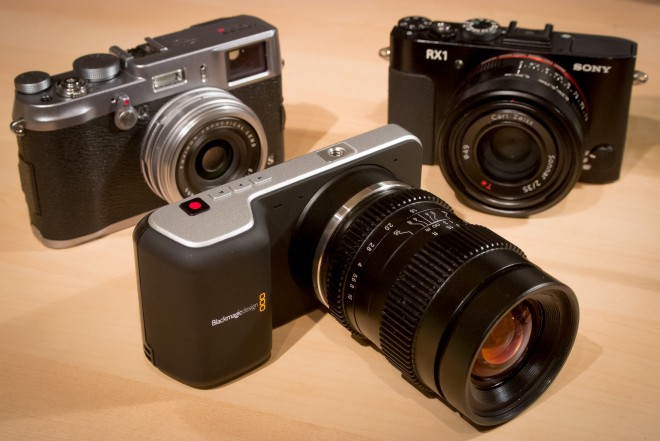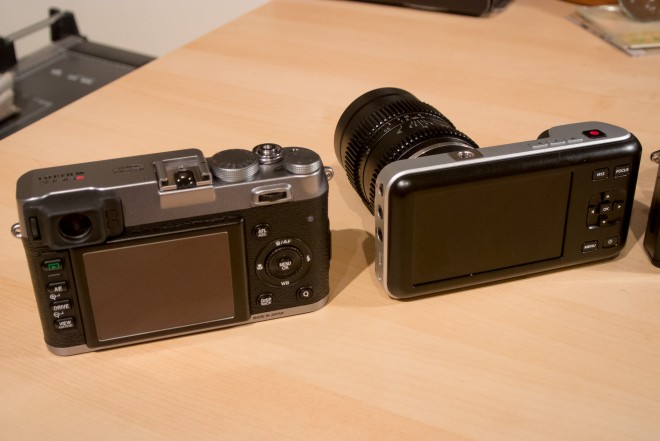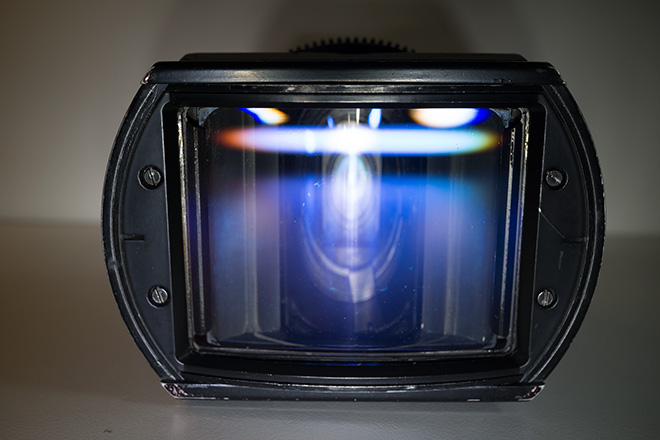Open letter to Japanese manufacturers on the enthusiast video market – improve or lose it

The Blackmagic Pocket Cinema camera is a wake-up call to the bigger manufacturers and their afterthought video modes.
A very traditional photography philosophy pervades the Japanese offices of Canon, Nikon, Sony, Fuji and Olympus. For only really Panasonic have made any attempt to take cinematic video to the masses.
Canon have been by far the luckiest of the major manufacturers when it comes to video and the filmmaking community. The 5D Mark II paved the way for increased sales of Rebels and the 7D to video enthusiasts the world over. They never intended for that to happen.
Several high profile filmmakers helped further cement Canon’s position at the top of the food chain at the same time Panasonic was offering more features and a sharper image on the GH1 and GH2.
Then with the 5D Mark III, just as the dying embers of the Canon DSLR video era were burning out and users were changing to other cameras like the GH3 and Sony FS100, Magic Lantern develop raw video. Canon really have had luck on their side big time.

It’s a lack of attention and focus which also hurts stills photographers using the live-view display.
On the X100S for example, an other superb stills camera, the EVF and LCD become virtually unusable under certain types of lighting as the sensor is only enabled for NTSC frame rates no matter what region it’s sold in.
On the RX1 video quality is like a broken VHS cassette despite Sony putting the same sensor into a dedicated video camera.
That lack of attention on video during the sensor design stages screwed the Sony VG900 on the market and it has seen massive discounting down from 3000 euros to 1000 euros in just 12 months.
I firmly believe the manufacturers are their own worse enemy.
Then comes the Blackmagic Cinema Camera, which proves the manufacturers CAN do what we’re asking of them.
The Canon 1D C 4K cinema DSLR costs $15,000 and yet doesn’t shoot ProRes. This does.
It has peaking for manual focus, something stills cameras have only just begun implementing, though not the 1D C! The colour space and sampling for video on the Blackmagic Pocket Cinema Camera is 10bit 4-2-2 and even though the sensor is a small Super 16mm chip it’s actually perfectly usable at ISO 1600 in low light. There’s none of the mushy compression AVCHD gives us or any of the electronic looking colour of 8bit codecs, all this for under $1000.
On the RX1 video quality is like a broken VHS cassette despite Sony putting the same sensor into a dedicated video camera.
That lack of attention on video during the sensor design stages screwed the Sony VG900 on the market and it has seen massive discounting down from 3000 euros to 1000 euros in just 12 months.
I firmly believe the manufacturers are their own worse enemy.
Then comes the Blackmagic Cinema Camera, which proves the manufacturers CAN do what we’re asking of them.
The Canon 1D C 4K cinema DSLR costs $15,000 and yet doesn’t shoot ProRes. This does.
It has peaking for manual focus, something stills cameras have only just begun implementing, though not the 1D C! The colour space and sampling for video on the Blackmagic Pocket Cinema Camera is 10bit 4-2-2 and even though the sensor is a small Super 16mm chip it’s actually perfectly usable at ISO 1600 in low light. There’s none of the mushy compression AVCHD gives us or any of the electronic looking colour of 8bit codecs, all this for under $1000.
With all the technology and resources at their disposal, I am amazed none of the big corporations in Japan can properly cater for the enthusiast and prosumer video market.
Embracing the niche
All new markets start as a niche.
You also have markets trickling down from the very top of the filmmaking industry and becoming more widely known. A perfect example of this is that of the anamorphic lens.

At play here is a cultural element that is very hard to see in the sales stats.
Director J.J Abrams has been using anamorphic lenses and flare in a range of massive cultural hits in the West.
As a result the anamorphic look has become more mainstream and more sought after (even creating price bubble for lenses as there are so few of them).
Nobody at Canon or Sony take any notice of things like this because they are focussed so intently on where the next billion dollars of growth is coming from.
The enthusiast video market is not as big as the prosumer stills camera market so Canon neglect us.
They prefer to concentrate on high added value products like the Cinema EOS range.The problem with this is that you become stuck with the status-quo and exposed when the momentum changes.This happened to Nokia when Apple came along out of the blue with the iPhone.
Today Blackmagic are too small and shipping in too low a quantity to be Apple and truly hurt Canon with disruptive technology, but there are signs of it happening elsewhere. Smartphones have killed the compact camera while Samsung have disrupted Sony and Panasonic’s TV businesses in a major way, simply by giving consumers a better image for much less money.
In the end that simple business principal will come to the enthusiast video market and the big manufacturers will completely lose their grip on it.
The post Open letter to Japanese manufacturers on the enthusiast video market – improve or lose it appeared first on EOSHD.com.

At play here is a cultural element that is very hard to see in the sales stats.
Director J.J Abrams has been using anamorphic lenses and flare in a range of massive cultural hits in the West.
As a result the anamorphic look has become more mainstream and more sought after (even creating price bubble for lenses as there are so few of them).
Nobody at Canon or Sony take any notice of things like this because they are focussed so intently on where the next billion dollars of growth is coming from.
The enthusiast video market is not as big as the prosumer stills camera market so Canon neglect us.
They prefer to concentrate on high added value products like the Cinema EOS range.The problem with this is that you become stuck with the status-quo and exposed when the momentum changes.This happened to Nokia when Apple came along out of the blue with the iPhone.
Today Blackmagic are too small and shipping in too low a quantity to be Apple and truly hurt Canon with disruptive technology, but there are signs of it happening elsewhere. Smartphones have killed the compact camera while Samsung have disrupted Sony and Panasonic’s TV businesses in a major way, simply by giving consumers a better image for much less money.
In the end that simple business principal will come to the enthusiast video market and the big manufacturers will completely lose their grip on it.
The post Open letter to Japanese manufacturers on the enthusiast video market – improve or lose it appeared first on EOSHD.com.
No comments:
Post a Comment